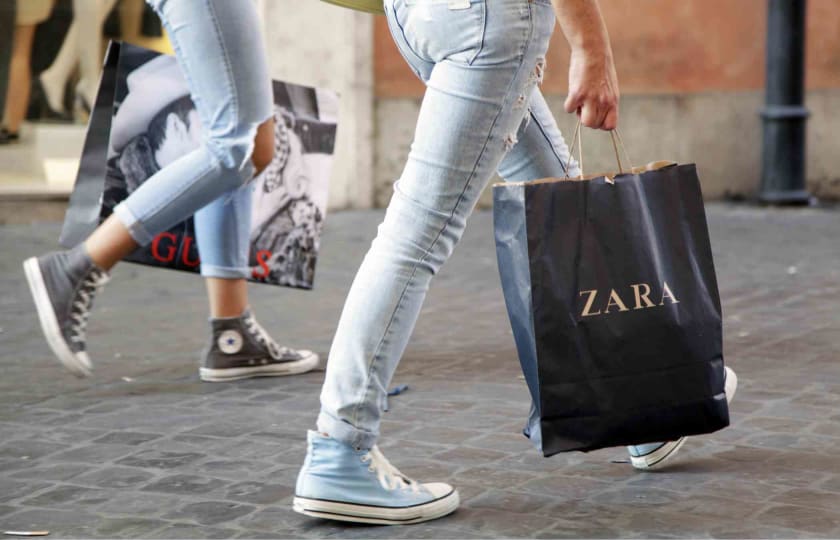Can Brands Follow Zara’s Footsteps and Reproduce Fast Runway Fashion?



With Zara streamlining their supply chain and providing fast runway fashion, retailers worldwide are facing various business challenges. However, certain practices can be learned from them.
The global retail industry has radically changed in the past five to seven years. With the advent of fast fashion and e-commerce, the fashion industry has witnessed some of the most revolutionary changes in these years. E-commerce tycoons like Amazon have forced clothing brands to present their work online, making it hard for traditional retailers to cope with the emerging challenging situation. Only a few brands could take advantage of the situation, and Zara is the most successful among them.
When I think about fast, affordable, and runway fashion, Zara is the first brand that comes to my mind. The parent company of this fast-fashion retailer, Inditex, revealed that Zara witnessed a whooping global net income worth 14 billion euros. This shows the success of the “fast fashion” model of Zara, allowing retailers to deliver exceptionally designer products with extreme speed to the mass markets.
However, it cannot be denied other brands have suffered stagnation or declining growth as they failed to cater to the instant-gratification-minded shoppers. Having said that, there are specific methods that retailers can adopt to follow the footsteps of Zara and create their own fast-fashion business model.
- Fewer Lead Times

Gone are the days when retailers can see the face of success by forecasting what their consumers would like to buy in the future. I, like everyone else, would prefer brands that can give me the taste of something new, exciting, something that others are missing. Hence, just like Zara, brands have to be fast in maintaining their store stocks to ensure that they provide their consumers with the products they are looking for. That is, whether it is a popular shirt worn by a top designer, socialite, or celebrity, ongoing trend, or weather-specific collections, the brand needs to provide it right away.
- Limited Stocks
Brands can reproduce fast runway fashion by manufacturing limited stocks for a specific style. That way, they would limit their exposure to single products while creating artificial scarcity like Zara. Therefore, if I apply the simple logic of demand and supply, the lesser availability of products would make them more desirable to the eyes of the consumers. Hence, allowing other brands to grasp on to the current market. Another huge benefit brands experience when they manufacture limited stocks is that they do not have to dispose of high volumes of clothes even if a particular trend or style suffers poor sales from failing to generate traction.
- Extensive Styles and Trends
Brands have to focus more on manufacturing styles and following trends rather than producing apparel in more quantities. For instance, Zara manufactures over 12,000 styles in a year. Hence, if a single style or trend sells out quickly, there are others to produce. I personally think by following this strategy, other brands can offer more choices to the consumers. Thereby, they would catch the shoppers’ attention and motivate them to purchase the items before time runs out. The shop floor can keep specific styles for four weeks only. This strategy would push the shoppers to visit the stores regularly and get their hands on the latest trend. Simultaneously, it would also allow brands to replace the trends and styles with fresh lines from the runway and maintain a steady supply of runway fashion.
- Unique Manufacturing Approach

Lastly, brands can also adopt the ‘make and buy’ policy of Zara to produce riskier and fashionable items, like the way we see in runway fashion. These items require detailed testing piloting; hence, they should be outsourced to a controlled and skilled group of designers. And standard designs that have a predictable demand should be outsourced to production areas where the cost is low. For instance, for high fashion items which are directly adopting runway fashion, Zara manufactures them at specific company-owned factories in Turkey, Portugal, and Spain. Whereas items that have a longer shelf life, like basic shirts, skirts, T-shirts, their production is outsourced to lower-cost suppliers.
Wrapping Up
Hence, fewer leads, limited stocks, extensive styles and trends, and a unique manufacturing approach are the four essential elements that brands need to adapt to cope with the challenge of bringing runway fashion to their stores. Fortunately, the good news is that potential fast-fashion retailers now can easily adopt these elements in their business model with Fashinza. With Fashinza, brands can launch their collection seamlessly without having to worry about the logistics of manufacturing. From manufacturing to delivery, Fashinza is here to take care of everything. With a portfolio containing over 200+ brands, Fashinza can help you produce the best-selling collection at the speed of light.



















